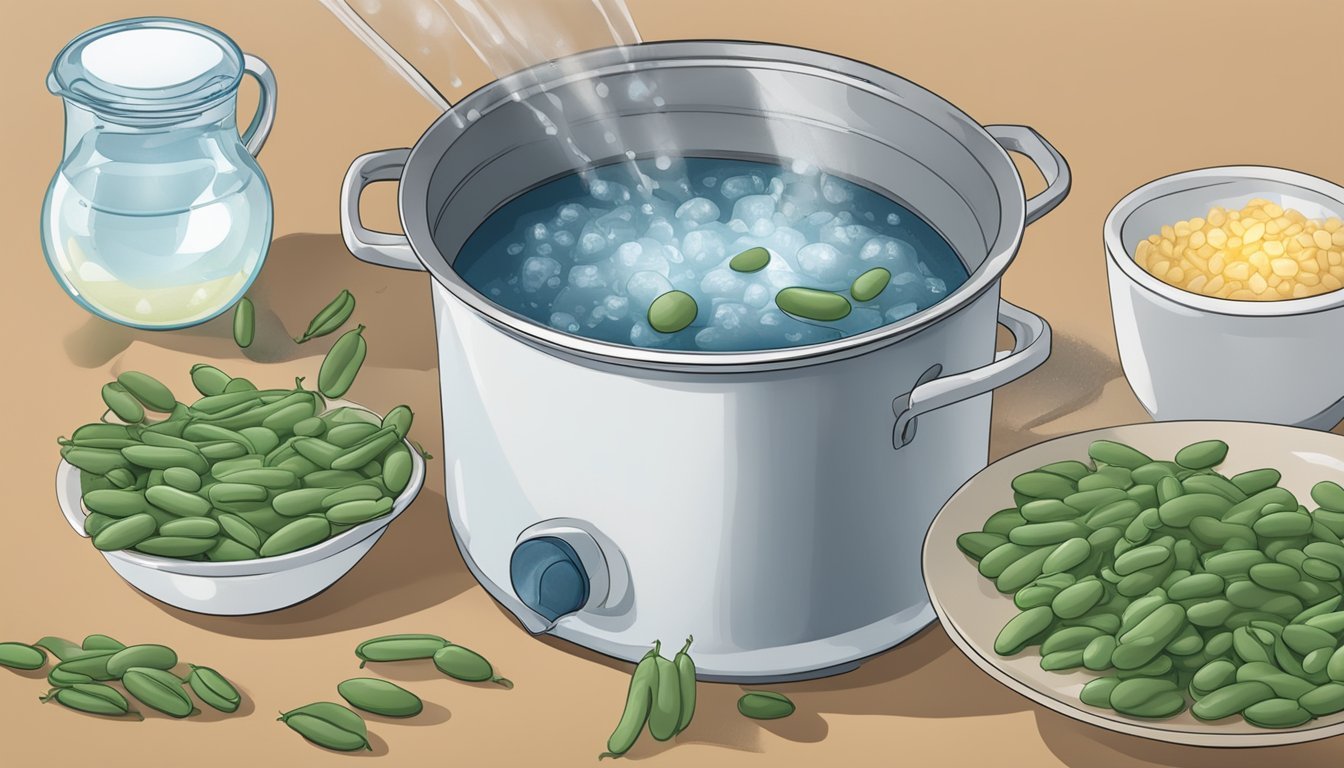Wax Beans Substitutes
Top Alternatives for Your Recipes
Finding a suitable substitute for wax beans can be essential for various reasons, such as availability, personal preference, or dietary needs. These yellow or purple beans are similar to green beans in texture and taste, making them fairly easy to replace in recipes. A great substitute for wax beans is green beans, as they share nearly identical cooking characteristics and flavor profiles.
Another excellent replacement is asparagus, which can provide a similar crunch and mild flavor, especially when seasoned similarly to wax beans. Lentils and zucchini also offer alternative textures and nutritional benefits, making them versatile substitutes in different dishes. Each of these substitutes can match the quantity and function of wax beans in your recipes without compromising on taste or texture.
For those interested in exploring diverse ingredients, wax beans provide a unique color and subtle differences in flavor. Yet in most culinary applications, switching them out with the mentioned substitutes should keep your dish intact while introducing a slight twist.
Understanding Wax Beans
Wax beans, a variety of Phaseolus vulgaris, are versatile in nutrition, recipes, and available forms. They are known for their distinct yellow hue and can be used similarly to green beans.
Nutritional Value
Wax beans are low in calories and a great source of vitamins A, C, and K. They provide dietary fiber and essential minerals like calcium and iron. A 100-gram serving of wax beans typically contains:
Nutrient Amount Calories 31 kcal Protein 2.4 grams Fiber 3.3 grams Vitamin C 12.2 mg Vitamin A 37 µg Calcium 37 mg Iron 1.2 mg
Inclusion of these beans in the diet supports immune health, bone health, and digestive health.
Common Uses in Recipes
Wax beans are interchangeable with green beans and can be prepared in numerous ways, such as steaming, boiling, roasting, sautéing, grilling, or searing. They maintain their bright yellow color even when cooked, unlike green beans which may lose some of their vividness.
Popular recipes include:
Wax beans with garlic & basil: Quick boiling followed by a sauté with garlic.
Salads: Blanched wax beans mixed with other fresh ingredients.
Stir-fries: Adding a sweet crunch to various dishes.
They offer versatility and a unique color profile to any meal.
Available Forms
Wax beans are available in several forms including fresh, canned, and frozen. Fresh wax beans can be found in the produce section of grocery stores, especially during their peak growing season. Canned wax beans, often combined with green bean mixes, provide convenience for quick meal prep.
Frozen wax beans are another option, retaining much of their nutritional value and texture when compared to fresh ones. This form is ideal for long-term storage and ease of cooking.
These options ensure that wax beans can be enjoyed year-round, complementing a variety of culinary needs and preferences.
Exploring Bean Substitutes
When looking for alternatives to wax beans, green beans, other beans with a similar texture, and those with a distinctive flavor are great options to consider.
Green Beans as a Close Alternative
Green beans are a natural substitute for wax beans due to their similar structure and versatile use in various dishes. These beans, available in both fresh and canned forms, can easily replace wax beans in recipes where you need a similar crunchy texture.
Green beans can be steamed, sautéed, or even served fresh in salads. Their bright green color and mild flavor make them suitable for recipes like stir-fries, casseroles, and side dishes. Adjust cooking times slightly when substituting green beans to match the desired texture.
Similar Texture Substitutes
When it comes to substitutes with a similar texture to wax beans, haricot beans and butter beans are excellent choices. Haricot beans, which are small and creamy, offer a smooth texture that can mimic the feel of wax beans in stews and soups.
Butter beans, also known as lima beans, have a flat shape but provide a similar tender texture. They work well in casseroles, bean salads, and mixed vegetable dishes. Opting for canned or fresh versions can ensure you match the texture needed for your recipe.
Flavorful Substitutes
For those seeking a flavorful substitute, fava beans and cannellini beans provide a rich taste that can enhance many dishes. Fava beans have a creamy texture and slightly nutty flavor that pairs well with a variety of ingredients, making them a versatile substitute.
Cannellini beans, also known as white kidney beans, offer a mild flavor and smooth texture. These beans can effectively replace wax beans in recipes where a subtle, nutty taste is desired. Both fava beans and cannellini beans can be used in soups, salads, and hearty stews.
Specific Substitute Recommendations
When choosing a substitute for wax beans, it's essential to consider the type of dish you're preparing. Different beans and vegetables may work better in cold dishes like salads or in hot dishes involving cooking techniques such as boiling, sautéing, or roasting.
For Salads and Cold Dishes
Green Beans: These are a direct substitute for wax beans in salads. They provide a similar texture and appearance, making them an easy choice for cold dishes.
Zucchini: Sliced zucchini can be a refreshing alternative. It offers a mild flavor and a crisp bite that pairs well with various salad ingredients. Use it raw or lightly blanched.
Canned Wax Beans: Ideal for convenience, these are pre-cooked and can be added directly to salads. They maintain a good texture and flavor.
Fava Beans: Though different in texture, fava beans can offer a unique twist to salads. Their slightly nutty flavor complements a range of dressings and ingredients.
For Hot Dishes and Cooking
Green Beans: An excellent substitute in cooked dishes, green beans can be boiled, sautéed, roasted, or even grilled. They mirror the versatility of wax beans. For many recipes, use a 1:1 ratio.
Zucchini: Works well in stir-fries and casseroles. Slice zucchini and cook it on medium heat for a similar texture to cooked wax beans. The mild flavor makes it a versatile ingredient in various hot recipes.
Frozen Green Beans: These can be a handy alternative when fresh wax beans aren't available. They retain their texture and can be used similarly in boiling or roasting.
Lentils: While not a direct substitute, lentils can be added to soups and stews in place of wax beans. They require cooking separately before being added to the dish, providing a hearty texture.
Remember to adjust cooking times and methods to fit the substitute you choose, ensuring your dish remains flavorful and appropriately textured.
Additional Vegetable Alternatives
When looking for substitutes for wax beans, there are various vegetable options that can offer similar textures and flavors. Some prominent alternatives include different varieties of peas, each bringing unique qualities to dishes.
Varieties of Peas
Snow Peas: Known for their flat, edible pods, snow peas are great for stir-fries and salads. They have a slightly sweet taste and a crisp texture. These peas can be sautéed, steamed, or even eaten raw.
Sugar Snap Peas: Combining the qualities of garden peas and snow peas, sugar snap peas have plump, edible pods. They are sweet and crunchy, making them suitable for snacking, stir-fries, and sautéed dishes.
Split Peas: Often used in soups and stews, split peas provide a hearty texture. They break down during cooking, creating a creamy consistency. They are ideal for dishes that require a thicker, more substantial base.
These peas serve as versatile replacements in various recipes, ensuring that you can still enjoy a similar taste and texture to wax beans.





